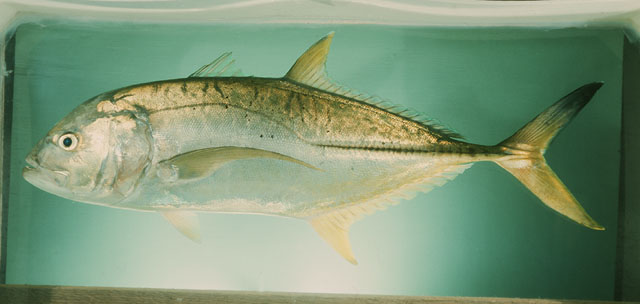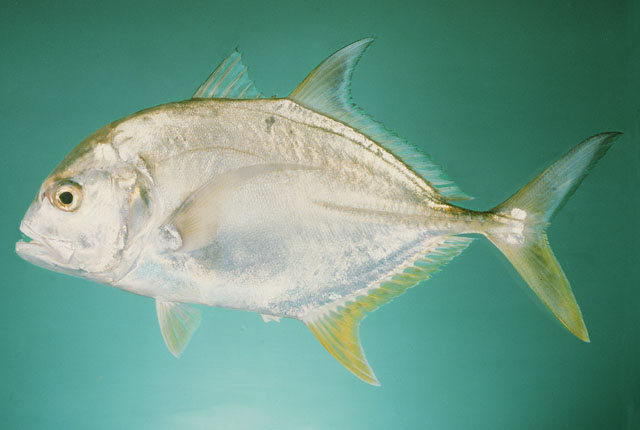Carangidae
Chiefly marine; rarely brackish. Atlantic, Indian and Pacific Oceans. Body generally compressed, although body shape extremely variable from very deep to fusiform. Most species with only small cycloid scales. Scales along lateral line often modified into spiny scutes. Detached finlets, as many as nine, sometimes found behind dorsal and anal fins. Large juveniles and adults with 2 dorsal fins. Anterior dorsal fin with 3-9 spines; the second having 1 spine and usually 18-37 soft rays. Anal spines usually 3, the first 2 separate from the rest; soft rays usually 15-31. Widely forked caudal fin. Caudal peduncle slender. Pelvic fins lacking in Parona signata. Vertebrae 24-27 (modally 24). Fast swimming predators of the waters above the reef and in the open sea. Some root in sand for invertebrates and fishes. One of the most important families of tropical marine fishes; fished commercially and for recreation.























